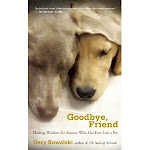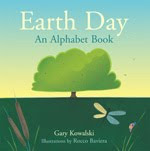Thursday, November 19, 2009
Thanksgiving Then and Now
While nominally Episcopalian, he himself was never a formal communicant in that church, and his Proclamation avoided specifically Christian language. Indeed, Washington’s writings virtually never referred to the deity as Christ or Redeemer or Savior, and his Thanksgiving decree was typical in calling on God as “the beneficent author all good” and “the Lord and Ruler of Nations,” seeking in his own way to find an inclusive vocabulary that could unite rather than divide his fellow Americans.
Religion, Washington felt, should be force that brings people together across sectarian lines. So in a letter he wrote as President in 1790 to the Jewish Synagogue in Newport, he assured the sons of Abraham that all in the newly founded nation “possess alike liberty of conscience and immunities of citizenship.”
"It is now no more that toleration is spoken of, as if it was by the indulgence of one class of people that another enjoyed the exercise of their inherent natural rights. For happily the Government of the United States, which gives to bigotry no sanction, to persecution no assistance, requires only that they who live under its protection, should demean themselves as good citizens."
Americans may finally be embracing what Washington called “the enlarged and liberal policy” of respect for religious differences. According to a Pew Forum poll conducted last year that interviewed 2,905 adults, only 29% of respondents surveyed agreed with the statement, “My religion is the one, true faith leading to eternal life.” Solid majorities of Roman Catholics, mainline Protestants and Evangelicals all agreed that other paths–even non-Christian religions–may lead to salvation.
Thanks largely to the separation of church and state, which our Founders so wisely instituted, the United States today has become the most spiritually diverse nation on earth. Harvard’s Pluralism Project counts 1660 mosques currently operating in our country, 724 Hindu temples, 2228 Buddhist centers, and 252 Sikh temples. For over two hundred years, devotees of most of these traditions have been able to co-exist amicably with their Christian and Jewish neighbors. Friendship, rather than strife, has been the norm.
As we gather round our tables in the spirit of George Washington’s Proclamation, that truly is a reason to give thanks.
Saturday, November 14, 2009
Old Time Religion and End Time Religion
The end of the world is coming—again.
Apocalyptic prophecies are a recurring phenomenon in Christian history and in
Now 2012 is the pre-determined moment for the final curtain to fall.
While doom sayers have deep roots in
Tom Paine, for instance, called the American Revolution “the birthday of the world.” As the Constitutional Convention drew to a close in 1787, Ben Franklin was convinced that the image on the back of the moderator’s chair, depicting the sun upon the horizon, represented a dawning moment, not a dusk. Similarly, the Great Seal of the
Now comes the final era of the Sibyl’s song; The great order of the ages is born afresh. And now justice returns, honored rules return; now a new lineage is sent down from high heaven.
The motto captured the upbeat mood of that generation. How many would have thought independence worth fighting for, had they imagined a general cataclysm was imminent?
If films like “2012” and “The Day After Tomorrow” are any indication, the “world-is-coming-to-an-end” message will always draw a big audience. Global warming, AIDS, H1N1, shifting weather patterns and similar threats will be seized upon as evidence that all is lost. The task for our time will be to recapture the faith of the founders, not to abandon hope, but to take melting ice caps, nuclear proliferation, economic recession and all the rest as problems for human ingenuity to solve.
“Do not anticipate trouble,” advised the wise Mister Franklin, “or worry about what may never happen. Keep in the sunlight.” The alternative is to let worst case scenarios become self-fulfilling predictions.










